There’s something magical about seeing a hummingbird flash by your window. It’s quick, colorful, and completely unexpected.
Thank you for reading this post, don't forget to subscribe!If you’ve ever wished they’d visit your yard more often, you’re not alone. And here’s the good news—you don’t need a big garden or fancy setup to make it happen. With just a few simple changes, you can turn your outdoor space into a favorite stop for hummingbirds.
Ready to make it happen? Let’s dive in.
Hummingbird Migrations: When to Expect Them
Hummingbirds don’t stay in one place year-round—they’re long-distance travelers. Most species in North America migrate twice a year, flying thousands of miles between their breeding grounds in the north and their winter homes in Central America and Mexico.
In the spring, they head north, often arriving in southern states like Texas and Louisiana as early as February or March. By late April or May, they reach the northern U.S. and parts of Canada. In the fall, they begin their journey back south, usually starting in late August through October.
Curious when hummingbirds will arrive near you?
You can track their journey with the Hummingbird Migration Map from Journey North — it’s updated with real-time sightings across North America.
Here’s how you can create a hummingbird-friendly backyard that will keep them coming back all season long.
1. Set Up a Hummingbird Feeder (The Right Way)
A feeder is probably the fastest way to invite hummingbirds over. But it’s important to do it right.
The timing depends on your location, but you can track their movement in real-time using the Journey North Hummingbird Migration Map. Watching the map can help you know when to put up feeders and when to expect these tiny travelers.
Tip: Put your feeder out about two weeks before hummingbirds usually arrive in your area—and leave it up two weeks after the last sighting in fall. You might just help a late migrant refuel on their long journey.
A hummingbird feeder with a built-in camera brings you closer to nature by capturing detailed footage of every visit. Some models come with one camera for front views, while others include a second camera for different angles or closer zoom. This dual-camera setup lets you observe feeding behavior and identify species more easily.
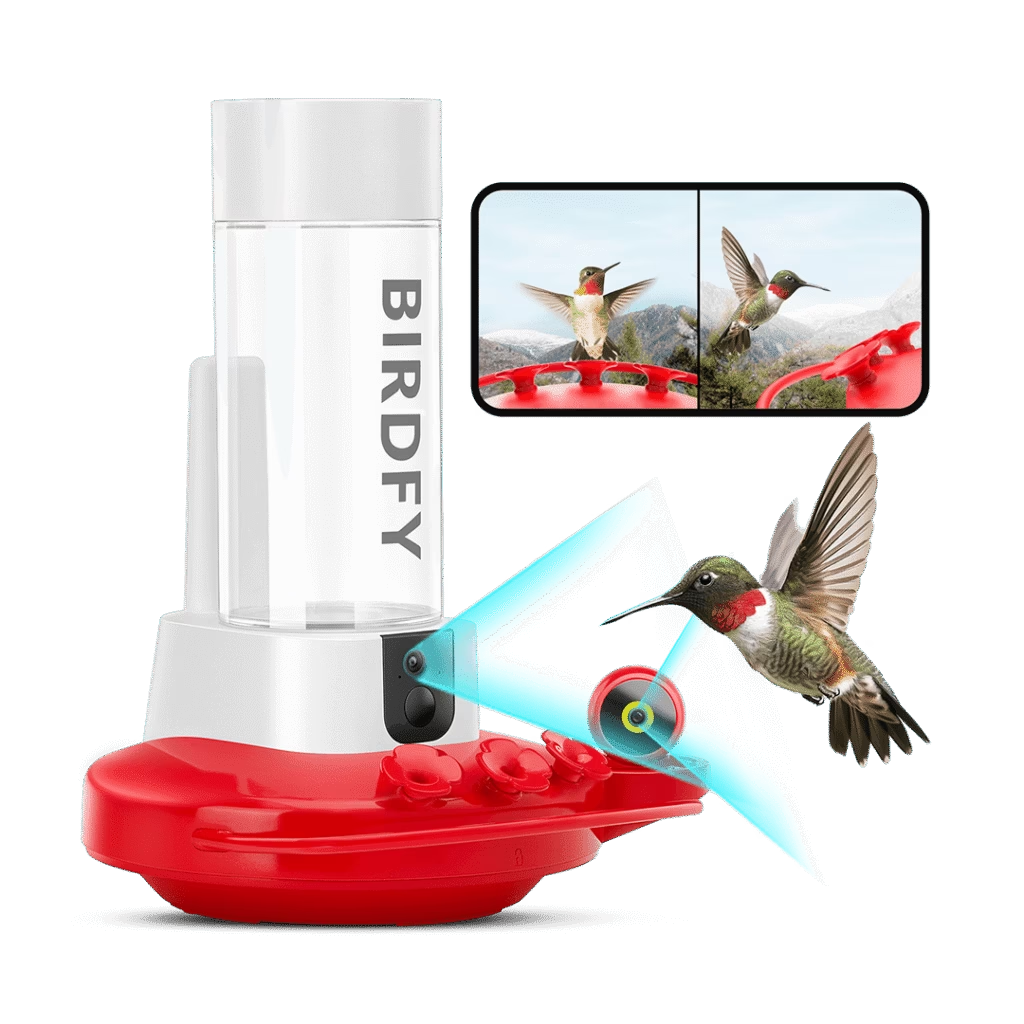
With features like motion detection, night vision, and app connectivity, these feeders turn your backyard into a live hummingbird hub—perfect for both casual bird lovers and serious enthusiasts.
DIY Nectar For Hummingbirds
Skip the store-bought red nectar; it often contains additives birds don’t need.
Instead, make your own simple mix: four parts water to one part plain white sugar. That’s it. No dyes, honey or brown sugar. Just clean and simple.
Boil the water first, stir in the sugar until it dissolves, and let it cool before filling the feeder.
I usually make a batch once a week and store it in the fridge.
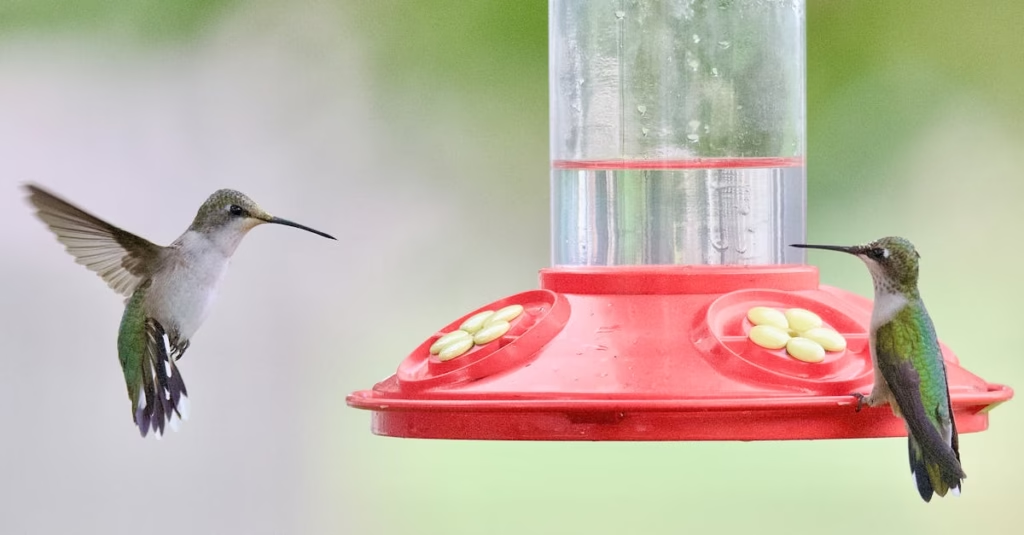
by A. G. Rosales via pexels
Tip: Place your feeder near flowers if you can. It looks more natural and feels safer for the birds.
For a full guide, check out the Smithsonian’s tips on feeding hummingbirds.
Keep Ants Out of Your Feeder
One of the most common (and frustrating) problems when feeding hummingbirds is ants. Once they find your nectar feeder, they’ll keep coming—and can quickly contaminate the sugar water or clog the feeding ports. I’ve had feeders completely swarmed within a day, which not only drives the birds away but turns maintenance into a daily battle.

A simple, effective fix? Add an ant moat between your feeder and its hanging point. The Birdfy Ant Moat is a compact, water-fillable cup that acts like a mini moat—ants can’t cross it to reach the feeder. It’s especially handy if you’re using the Birdfy hummingbird feeder with a solar panel or camera setup, since it clips right into place. Just fill it with water (or a mix of water and a few drops of mineral oil to slow evaporation) and check it once or twice a week.
You’ll notice fewer ants and way less mess. It’s a cleaner, safer solution than using sticky substances, which can be harmful to birds. If ants are a problem where you live—and they often are in warmer months—this little addition can make a big difference.
2. Plant Flowers Hummingbirds Can’t Resist
Hummingbirds are naturally drawn to nectar-rich blooms—especially those in vibrant reds, pinks, and purples. These colors signal a reliable food source in the wild, so planting them gives your garden a strong visual appeal for these tiny fliers.
In most gardens, favorites like bee balm, salvia, and trumpet vine are guaranteed to attract hummingbirds. Other great choices include coral honeysuckle, zinnias, columbine, and cardinal flower.
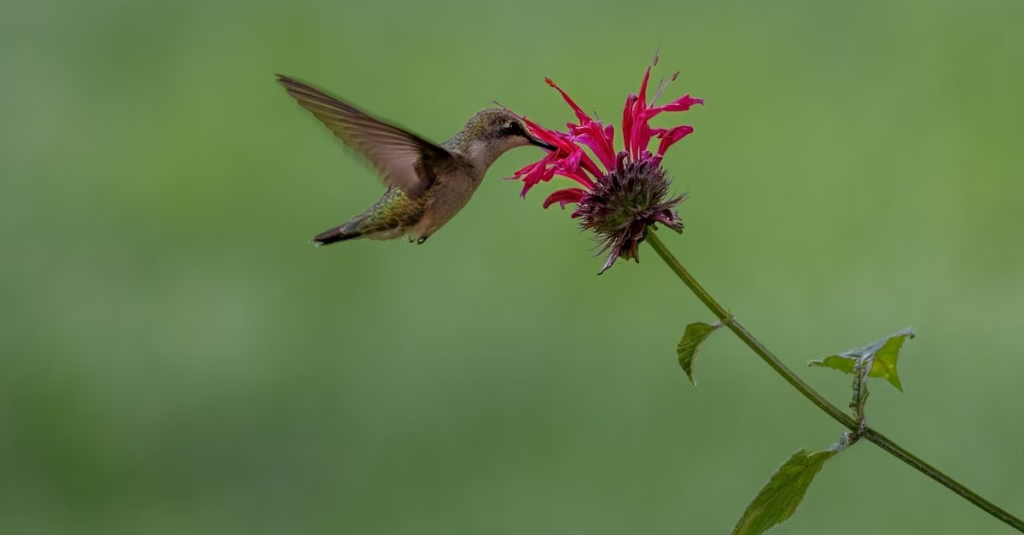
Tip: Choose a variety of plants that bloom at different times. That way, you’ll have something always in bloom, and your backyard will stay busy with activity.
The Audubon Society even offers a handy native plants database to help you pick the best flowers for your region.
3. Skip the Pesticides
This one’s simple. If you want hummingbirds, you need insects too. Hummingbirds eat small bugs for protein, especially during nesting season.
Using pesticides wipes out their natural food source—and nobody wants that.
Stick to natural gardening methods. The birds (and your plants) will thank you.
Learn more about creating a healthy bird habitat without chemicals at Audubon’s guide to bird-friendly gardening.
4. Add Water, Even If It’s Small
Hummingbirds don’t splash around in standard birdbaths like larger birds do. Instead, they love flying through light mist or catching tiny droplets on their feathers. That means a traditional birdbath isn’t very useful for them.
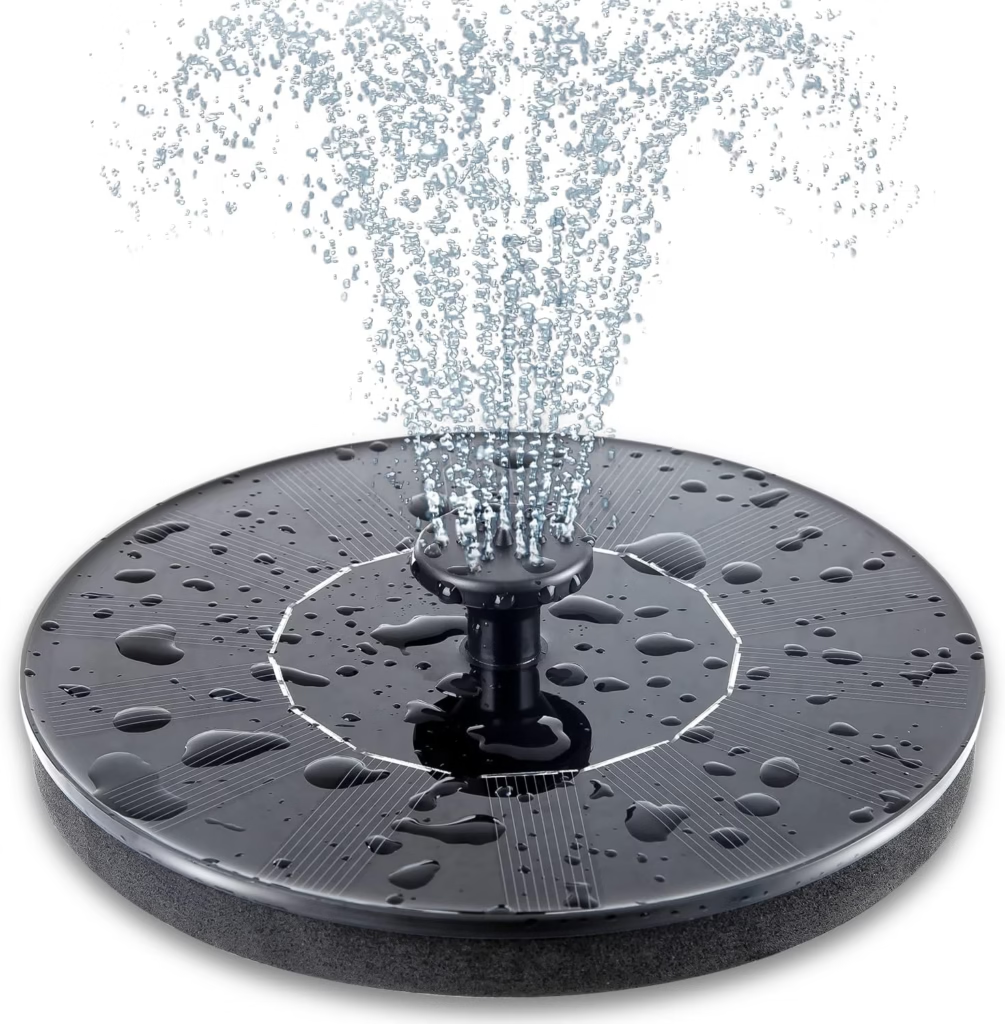
Instead, install a mister, drip fountain, or gently bubbling water feature. These create the fine spray or light trickle that hummingbirds find irresistible. Position it near flowers or feeders to make it even more inviting. You’ll often see them darting through the mist like it’s their own personal spa. The hummingbirds would swoop through the mist again and again. It was like a live nature show.
5. Create a Safe Space
Birds don’t just need food and water—they need safety. These tiny birds need quiet spots to rest, perch, and stay alert for predators like cats or hawks.
Plant dense shrubs, small trees, or tall flowering plants near feeders and water features. Look for spots that offer light cover but also allow clear lines of sight, so hummingbirds feel secure yet aware of their surroundings.
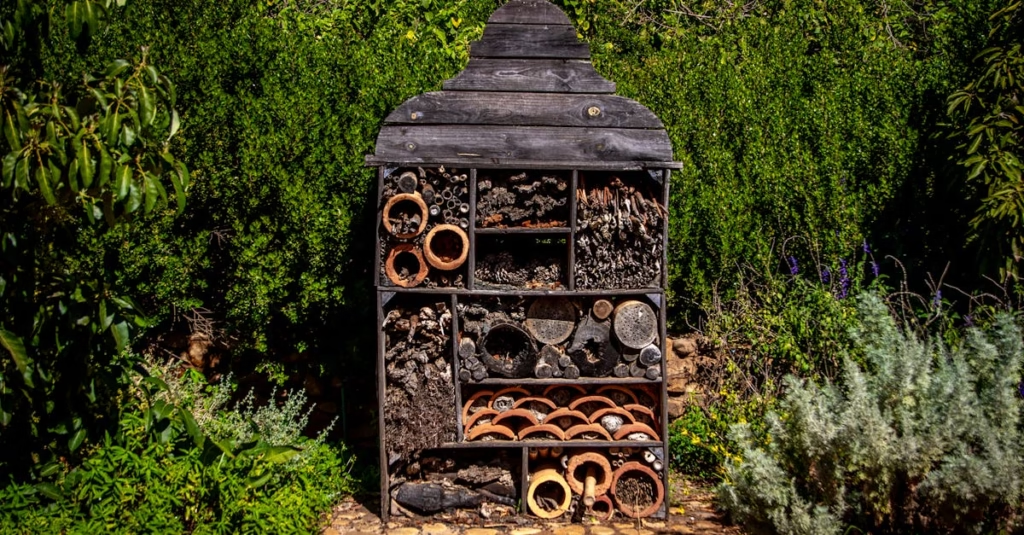
by Magda Ehlers via pexels
Bonus: natural perches also give you more chances to spot them resting and preening between feedings.
Final Thoughts
Attracting hummingbirds isn’t about luck. It’s about creating a little world they want to live in.
With the right food, flowers, water, and shelter, you’ll turn your backyard into a hummingbird haven.
Honestly, there’s nothing better than sipping coffee on the porch while a tiny flash of color zooms by.
Give a few of these tips a try—and get ready to fall in love with your new guests.

